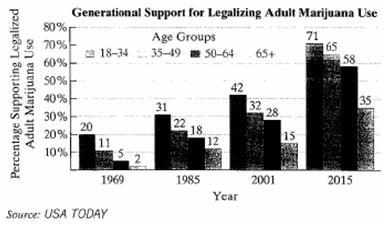Problem 1CP Problem 2CP Problem 3CP: CHECK POINT 3 Let U = { a , b , c , d , e } and A = { a , d } . Find A’. Problem 4CP: CHECK POINT 4 Find each of the following intersections: a. {1, 3, 5, 7, 10} ∩ {6, 7, 10, 11} b. {1,... Problem 5CP: CHECK POINT 5 Find each of the following unions: a. {1, 3, 5, 7, 10} ∪ {6, 7, 10, 11} b. {1, 2, 3} ∪... Problem 6CP Problem 7CP Problem 8CP: CHECK POINT 8 According to factmonster.com, among the U.S. presidents in the White House, 26 had... Problem 1CVC: Visual relationships among sets are shown by ____. Problem 2CVC Problem 3CVC Problem 4CVC Problem 5CVC Problem 6CVC Problem 7CVC Problem 8CVC: True or False: Equal sets are represented by the same circle. _________ Problem 9CVC Problem 1E Problem 2E Problem 3E Problem 4E Problem 5E Problem 6E Problem 7E Problem 8E Problem 9E Problem 10E Problem 11E Problem 12E Problem 13E Problem 14E Problem 15E Problem 16E Problem 17E Problem 18E Problem 19E Problem 20E Problem 21E Problem 22E Problem 23E Problem 24E Problem 25E Problem 26E Problem 27E Problem 28E Problem 29E Problem 30E Problem 31E Problem 32E Problem 33E Problem 34E Problem 35E Problem 36E Problem 37E Problem 38E Problem 39E Problem 40E Problem 41E Problem 42E Problem 43E Problem 44E Problem 45E Problem 46E Problem 47E Problem 48E Problem 49E Problem 50E Problem 51E Problem 52E Problem 53E Problem 54E Problem 55E Problem 56E Problem 57E Problem 58E Problem 59E Problem 60E Problem 61E Problem 62E Problem 63E Problem 64E Problem 65E Problem 66E Problem 67E Problem 68E Problem 69E Problem 70E Problem 71E Problem 72E Problem 73E Problem 74E Problem 75E Problem 76E Problem 77E Problem 78E Problem 79E: In Exercises 79-92, use the Venn diagram to determine each set or cardinality. B Problem 80E: In Exercises 79-92, use the Venn diagram to determine each set or cardinality. A Problem 81E: In Exercises 79-92, use the Venn diagram to determine each set or cardinality. A ∪ B Problem 82E: In Exercises 79-92, use the Venn diagram to determine each set or cardinality. A ∩ B Problem 83E: In Exercises 79-92, use the Venn diagram to determine each set or cardinality.
83.
Problem 84E: In Exercises 79-92, use the Venn diagram to determine each set or cardinality.
84.
Problem 85E: In Exercises 79-92, use the Venn diagram to determine each set or cardinality. n ( A ′ ) Problem 86E: In Exercises 79-92, use the Venn diagram to determine each set or cardinality. n ( B ′ ) Problem 87E: In Exercises 79-92, use the Venn diagram each set or cardinality.
87.
Problem 88E: In Exercises 79-92, use the Venn diagram to determine each set or cardinality. ( A ∪ B ) ′ Problem 89E: In Exercises 79-92, use the Venn diagram to determine each set or cardinality.
89.
Problem 90E: In Exercises 79-92, use the Venn diagram to determine each set or cardinality.
90.
Problem 91E: In Exercises 79-92, use the Venn diagram to determine each set or cardinality. n ( U ) − n ( B ) Problem 92E: In Exercises 79-92, use the Venn diagram to determine each set or cardinality. n ( U ) − n ( A ) Problem 93E: Use the formula for the cardinal number of the union of two sets to solve Exercises 93-36. Set A... Problem 94E: Use the formula for the cardinal number of the union of two sets to solve Exercises 93-96.
94. Set A... Problem 95E Problem 96E Problem 97E Problem 98E Problem 99E Problem 100E Problem 101E Problem 102E Problem 103E Problem 104E Problem 105E Problem 106E: In Exercises 105-108, use the Venn diagram to determine each set or cardinality.
106.
Problem 107E Problem 108E: In Exercises 105-108, use the Venn diagram to determine each set or cardinality. n ( A ∩ B ) [ n ( A... Problem 109E: A math tutor working with a small group of student asked each student when he or she had studied for... Problem 110E: A math tutor working with a small group of students asked each student when he or she had studied... Problem 111E: A Math tutor working with a small group of students asked each student when he or she had studied... Problem 112E: A Math tutor working with a small group of students asked each student when he or she had studied... Problem 113E Problem 114E Problem 115E: A math tutor working with a small group of students asked each student when he or she had studied... Problem 116E Problem 117E: In Exercises 117-122, use the information in the graph to place the indicated job in the correct... Problem 118E: In Exercises 117-122, use the information in the graph to place the indicated job in the correct... Problem 119E: In Exercises 117-122, use the information in the graph to place the indicated job in the correct... Problem 120E: In Exercises 117-122, use the information in the graph to place the indicated job in the correct... Problem 121E: In Exercises117-122, use the information in the graph to place the indicated job in the correct... Problem 122E: In Exercises 117-122, use the information in the graph to place the indicated job in the correct... Problem 123E: A palindrome number is a natural number whose value does not change if its digits are reversed.... Problem 124E: A palindromic number is a natural number whose value does not change if its digits are reversed.... Problem 125E: A palindromic number is a natural number whose value does not change if its digits are reversed... Problem 126E: A palindromic number is a natural number whose value does not change if its digits are reversed.... Problem 127E: A palindormic number is a natural number whose value dose not change if its digits are reversed.... Problem 128E: A palindromic number is a natural number whose value does not change if its digits are reversed.... Problem 129E: A palindromic number is a natural number whose value does not change if its digits are reversed.... Problem 130E: A palindromic number is a natural number whose value does not change if its digits are reversed.... Problem 131E: A palindromic number is a natural number whose value does not change if its digits are reversed.... Problem 132E: A palindromic number is a natural number whose value does not change if its digits are reversed.... Problem 133E: The bar graph shows the percentage of Americans, by age group, supporting legalized marijuana for... Problem 134E: The bar graph shows the percentage of Americans, by age group, supporting legalized marijuana for... Problem 135E Problem 136E Problem 137E Problem 138E: The bar graph shows the percentage of Americans, by age group, supporting legalized marijuana for... Problem 139E Problem 140E Problem 141E Problem 142E Problem 143E Problem 144E Problem 145E Problem 146E Problem 147E: 147. Describe what is meant by the complement of a set.
Problem 148E Problem 149E Problem 150E Problem 151E Problem 152E Problem 153E Problem 154E Problem 155E: Make Sense? In Exercises 152-155, determine whether each statement makes sense or does not make... Problem 156E Problem 157E Problem 158E Problem 159E Problem 160E Problem 161E Problem 162E Problem 163E Problem 164E Problem 165E Problem 166E Problem 167E format_list_bulleted



 Holt Mcdougal Larson Pre-algebra: Student Edition...AlgebraISBN:9780547587776Author:HOLT MCDOUGALPublisher:HOLT MCDOUGAL
Holt Mcdougal Larson Pre-algebra: Student Edition...AlgebraISBN:9780547587776Author:HOLT MCDOUGALPublisher:HOLT MCDOUGAL